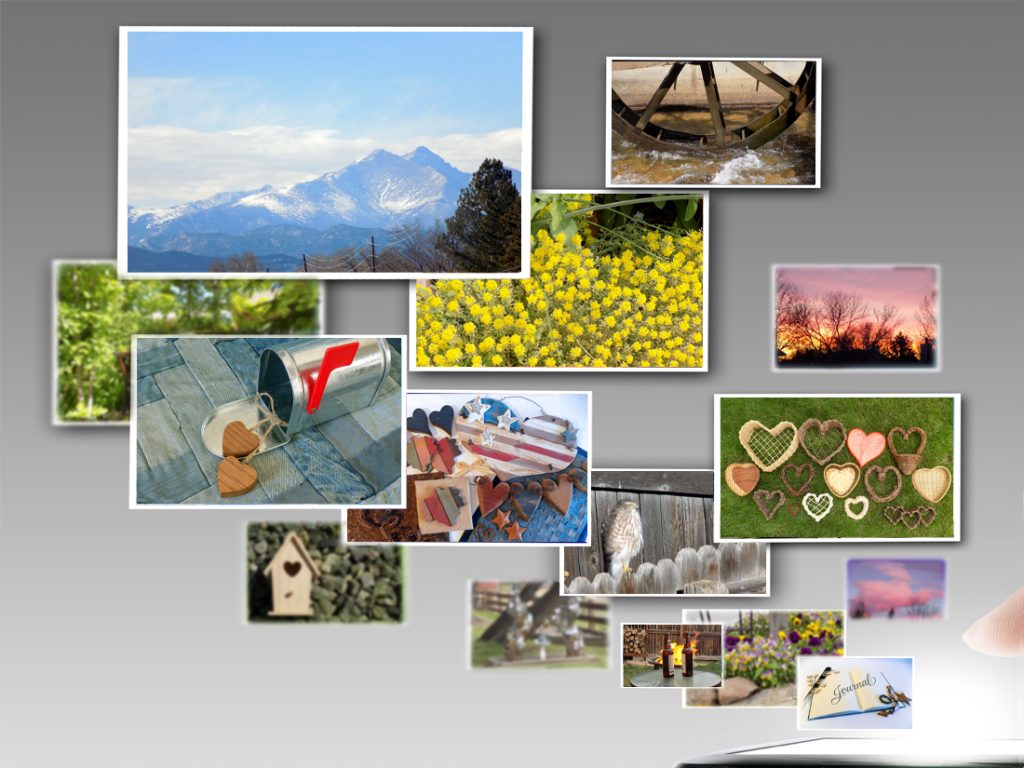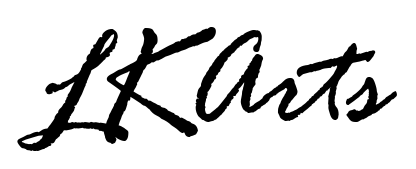Balancing the pros and cons of stock images often depends on where you start. The project’s budget, the time frame of the project and even the size of the company behind the project, can all change the perception of whether using a stock image is a pro or a con. In this article, we’ll present the pros and cons of stock photos, as well as how to use them effectively.
While I was sorting through the information found on-line, I found much of it is specific to stock photography which originated in the 1920’s. The early stock photos were mostly shared for editorial purposes, as advances in printing allowed publications to include photos.
Today stock is a whole lot more than photos. Vector graphics, templates, mock-ups, fonts and even video clips can be found on today’s stock sites. The cost of these assets include a multitude of choices from free downloads to thousands of dollars for one image.
These sites offer instant availability of images though the internet and websites. The offerings are created by photographers and artists without a specific project, allowing contributors to create a wide variety of images with no constraints on their ideas and creativity.
Considering Your Options
The main considerations to use when choosing the images and assets you need depend on several factors. These considerations are geared towards the commercial use of the stock assets, but may be of some help for personal use projects, too.
Project Requirements
The intended use and scope of the project is the first consideration. If your project is a marketing campaign which runs across multiple platforms, the assets you choose must be versatile and adjustable. A print campaign requires high quality images for best results and those projects that are for a variety of screen sizes has another set of requirements.
These considerations are only applicable if the project is for commercial use, marketing or re sale, not personal use.
The Value of Your Time
Do you have plenty of time to browse the free sites that often have less robust search functions? Or is the project on a strict schedule, where you need to find a lot of assets in a short amount of time? Another consideration is the amount of time you have to allot to make adjustments and manipulations needed to make the assets work for you.
If time is short, choose stock sites with great search capabilities, that have payment options to meet your situation. If you have lots of time to browse, definitely start with the free offerings, many of the smaller sites have little to no navigation so, it can be like looking for a needle in a haystack.
Budget Considerations
The budget for the project is the third part of finding the right balance in choosing stock assets. A small budget or no money for the project means you use your time to search and find the pictures that will work. If there’s a small budget you should consider the subscription or credit options. If there’s a size-able budget consider the highest quality stock balanced against a professional photographer.
The Pro’s and the Cons

The Project’s Requirements
The pros of stock assets is they offer a immense variety of options for high quality images and many of these are easily edited, making them versatile as well.
The cons of stock images is that they can be easy to recognize and may lack authenticity. Popular images can show up in a competitor’s marketing and may be found in multiple places.
Assessing The Time It Takes
The Pros of using Stock assets include the efficient search functions on many sites that help narrow a search quickly. Stock assets can save you time when the project needs to be completed quickly, and downloading the assets is fast and easy.
The Cons on many of the free sites is that the search functions may be limited or non-existent and you may have to search through lots of unrelated images to find assets that meet all your needs, which can be frustrating. Researching the varying license requirements can be time consuming.
Weighing The Cost
The Pros of stock sites is that they offer high quality at affordable prices, from free to negotiating the purchase of full rights. The options include subscriptions, credits and single purchase.
The Cons of using stock for your marketing include some high-quality images may require attribution. Free stock sites can be hard to find what you need. Don’t forget to add the cost of your time, both searching and in adjusting the stock you choose.

Do you have to cite stock images?
Attribution or citing the author and site where the image was obtained all depend on the licensing of the product. When looking for that perfect picture you will find terms like ‘Rights-managed’, ‘Royalty-free’ and ‘Public Domain’. These terms are important to understand so you don’t use an asset in a way that might cause you problems in the future.
Types of Licenses
Rights Managed (RM):
When buying stock, RM refers to a copyright license which allows the use of the image as specified by it’s license. A good example of a RM license are photos authorized for editorial content only. These images are generally sold by the size of the image you choose.
Royalty-free (RF):
Royalty-free images are assets that can be used for an unlimited time without having to list credit. For images to be RF, originators must put this label on their content. These assets can be found for free, but mostly purchased for a flat fee and the license never needs to be renewed. Currently this is the most common stock image license.
For both RM and RF images, the plus is that you can check the terms of the license before you buy and can determine if the asset meets your needs. The downside is that it takes time to research each image’s license – they vary from site to site and even image to image.
Creative Commons License (CC)
This comes directly from the site: “The Creative Commons copyright licenses and tools forge a balance inside the traditional “all rights reserved” setting that copyright law creates. …. The combination of our tools and our users is a vast and growing digital commons, a pool of content that can be copied, distributed, edited, remixed, and built upon, all within the boundaries of copyright law.”
Public domain:
The term ‘public domain’ refers to creative materials that are not protected by copyright, trademark, or patent laws. They include photos and vector art whose copyright has expired or never existed.

Public domain images include iconic illustrations like the WWII poster “ I WANT YOU: with a Uncle Sam illustration and are great for projects that you want recognition, or incorporating into other art and even promotions, but know that images under the public domain license can be used by anyone, anywhere… so your project may not be seen as unique. They may also be lower quality and have limited sizing options.
Be sure to investigate and be aware of the various licensing requirements ranging from exclusive to public domain and from unlimited to attribution required. Model releases should be included for stock images when a person is recognizable in them. Here’s a few more terms to be aware of:
Exclusive Rights
When purchasing exclusive rights, the asset becomes your property. The stock site will broker the details between you and the originator of the image. The image may have been used in the past, but won’t be able to be re-sold or used by anyone else in the future.
The downside is that this can be an expensive option, but if you go this route, there’s still a chance of seeing it used else-where. Talk with a photographer and /or illustrator before making this commitment, since the cost of creating your own unique assets may be as cost effective as buying the exclusive rights to a stock image.
For Personal Use Only
Don’t use anything that comes with this restriction in your business, either for resale or marketing including social media. It can be a big headache to use an asset with this tag, from inconvenience to having to adjust after the creator catches the unauthorized usage, to serious legal ramifications .
Commercial Versus Personal Use
To have the legal right to use an image, there are basically three alternatives:
1. Create the image; 2. Search for a free image, including public domain; and 3. Buy the rights to use the image, including exclusive, managed and royalty free.
When you create your own image it should be your photo and /or art work.
For photos, it could be that you took the pictures yourself or hired a professional photographer. You and the photographer should have an agreement (in writing) giving you the rights to the pictures. It doesn’t matter if you paid the photographer or worked out a trade.
If you have the talent to create your own art work, whatever medium, that work is yours and of course, you own the right to use it how ever you choose. This includes digital art work.
There is a thin line between using an asset you got from a stock site and after making adjustments, calling it your own. Ask yourself how much of this is mine and how much did I use from the stock asset. Is the asset still recognizable as the original?

Stock Sites: Premium, Free and everything in between
There are so many options out there it is really a matter of what you need for the project you are working on. From the very high-end sites like Getty Images, Shutterstock and Dreamstime to the quality free sites like Unsplash, Pexels and Gratisography there is a also vast world in the middle.
I found the following statement from author Meghan Boilard is an excellent description of stock sites: “The majority of stock photography comes at a price. However, that’s just about where the similarities end. Every service has something slightly different to offer, even if it may not be immediately evident at a quick glance.”
In researching this topic it is interesting that the articles that claim to list the top sites rarely agree on what those sites are. This information supports the notion that the best sites often depend on what you need.
The premium sites generally have the most to choose from, but can also cost the most. They often offer some free images for a variety of reasons. They have high standards for quality and often feature professional photographers and artists.
Most of the premium and mid-range sites have several options for purchasing stock. Choosing a subscription plan or a credit based option is usually more cost effective than purchasing the assets individually. While these high-end options offer amazing variety, the most popular images can also be used by others so you might see them in other places… including your competition!
The article quoted above is from ‘Best Stock Photo Sites’, at PhotoWorkout and has a nice comparison of the pricing for their list of top stock companies.
On the other end of the spectrum the stock sites offering free downloads often have more restrictions on the images, the available files might be smaller in numbers or quality and they often have less robust search functions. Watch for restrictions like ‘For Personal Use Only’ or attribution required. But there are also wonderfully creative images available should your budget be nonexistent or you are working on a personal project.
And everything in between includes the small to medium sites, I include this section for the creators who host a site that features just their own work like: Photographer Jay Mantri and Jan Vašek. LKArts falls into this category, offering assets for designers and artists at low cost for the quality, plus ready to print, high quality options for greeting cards and wall decor. Visit my shop here.
It is a good practice to credit the artist or photographer who created the image as well as the site where you found it, when at all possible. This helps the creators grow their name recognition and continue to create their unique vision, thus helping them make a living. And it helps you to have even more variety of stock images to choose from.
This category also includes stock sites that have a very specific focus in content. Assets from Deviant Art tend toward fantasy and some of the strangest stock images out there. Travel, food and marketing are all topics available in a stock search.

Premium Stock Sites
Pros of Premium Sites
• Highest quality
• Largest selections
• Excellent search functions
Cons of Premium Sites
• Highest costs
• Licensing requirements
• Over use
Mid Range Stock Sites
Pros of Mid-Range Stock Sites
• High quality
• Large selection
• Search functions vary
Cons of Mid-Range Sites
• Licensing requirements
• Lack authenticity
Free Stock Sites
Pros of Free Stock Sites
• No cost
• Good quality
• Easy manipulation
Cons of Free Stock Sites
• Limited search capabilities
• Licensing requirements
• Over use

Tips To Transform Stock Images
The following tips can help you to take any stock asset and make it your own. Depending on your expertise and software these tips go from quick and easy to extensive adjustments, this list is meant to spark your creativity and fire up your imagination.
First, think about what the goal of the project is, and how the asset will be used.
Second be open to the possibilities and options. Searching stock sites can reveal relationships and ideas you might not have thought about when you started your search. How many different ways can you think of to use the asset? How much time will it take to make the adjustments you want?
Third, choose the asset carefully… think about what elements you can use to change the asset to meet your needs.
You can experiment by :
• adding text
• adding your own photo
• adding graphics, including your logo
• adding solid or transparent banners, color bars or shapes
• cropping the image
• changing the color: including ghosting and filters
• combining elements: use 2 or more of the elements to direct attention to the point of the project.
A Visual Example


The first image in this post is an example of changing a stock image to become uniquely yours.
The background of the image was originally downloaded from Graphic Stock* (*Graphic Stock is now Story Blocks). I liked the shading and borders, plus the way it related to this subject, but there were two adjustments I needed to make.
The first was to adjust the size, since the original file was not the same size as my blog headers. And second, I wanted to use LKArts’ images in the frames.
The size was changed in two steps, first by cropping out most of the hands and the phone, just leaving the glow and fingertip. Then, because I was planning on changing the small images for original pictures, I stretched the file to fill the width I needed.
You can see that all the images in my header are wider than the original file. I only was able to do this successfully because the file was only going to be used digitally and I added original photos to fit the wider spaces.
To accomplish this in Adobe Photoshop, I created a mask for each frame and ‘pasted into’, then sized the photo. To add some depth, I blurred some of the images, imitating the original.
Even though this took me a couple of hours, I probably saved twice that by having the structure, background and shading on file as an asset.
Another time saver for this one was that all the pictures were already gathered from “The A to Z Guide Of Ways To Stay Creative”, so I had a selection of curated images to pick and choose the ones that would give me the variety I wanted to include.
“The A to Z Guide of Ways to Stay Creative” is available here, just sign up for our newsletter email list.
For more ideas to adjust your stock assets, check out my post ‘The Principles and Elements of Design”. Plus there are loads of options offered on the Internet, including the stock sites themselves

